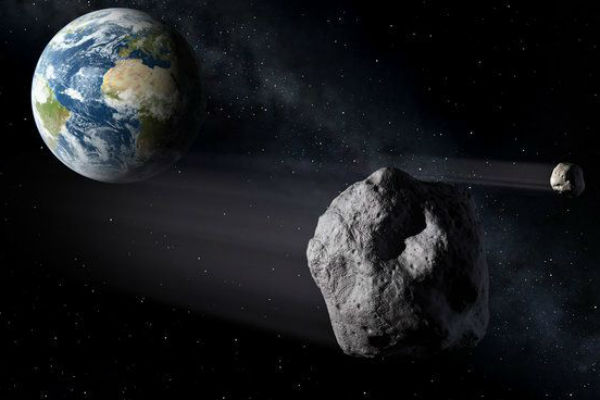Washington: Astronomers are urgently working to point telescopes around the world and in space at an unusual object an asteroid, or perhaps a comet which came from somewhere else in our galaxy and now on its way out of the solar system, NASA has said.
Once the data is obtained and analysed, astronomers may know more about the origin and possibly composition of the object.
If it originated outside our solar system as the researchers believe it would be the first “interstellar object” to be observed and confirmed by astronomers.
This unusual object, designated A/2017 U1, is less than 400 meteres in diameter and is moving remarkably fast, NASA said this week.
“It is going extremely fast and on such a trajectory that we can say with confidence that this object is on its way out of the solar system and not coming back,” said Davide Farnocchia, a scientist at NASA’s Center for Near-Earth Object Studies (CNEOS) at the agency’s Jet Propulsion Laboratory in Pasadena, California.
The object was discovered on October 19 by the University of Hawaii’s Pan-STARRS 1 telescope on Haleakala, during the course of its nightly search for near-Earth objects for NASA.
“Its motion could not be explained using either a normal solar system asteroid or comet orbit,” said Rob Weryk, a postdoctoral researcher at the University of Hawaii Institute for Astronomy, adding that the object “came from outside our solar system.”
The CNEOS team plotted the object’s current trajectory and even looked into its future. It came from the direction of the constellation Lyra, cruising through interstellar space at a brisk clip of 25.5 kilometeres per second, according to the researchers.
The object approached our solar system from almost directly “above” the ecliptic, the approximate plane in space where the planets and most asteroids orbit the Sun, so it did not have any close encounters with the eight major planets during its plunge toward the Sun.
The object passed under Earth’s orbit on October 14 at a distance of about 24 million kilometres — about 60 times the distance to the Moon.
It has now shot back up above the plane of the planets and, travelling at 44 kilometres per second with respect to the Sun, the object is speeding toward the constellation Pegasus, according to the researchers.
IANS

